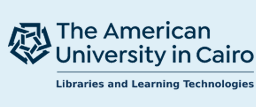Abstract
The purpose of this study is to test the hypothesis that American L2 learners of Arabic find consonant clusters of Arabic that are not permissible in their native language difficult to pronounce. The interlanguages of six adult native speakers of American English learning Arabic as a second language is investigated. Subjects are asked to read sentences containing words ending with consonant clusters. Subjects' performance on clusters permissible in Arabic and English and clusters non-permissible in English is compared. The difference between subjects' performance on clusters permissible in Arabic and English and clusters permissible in English only is found to be significant, a finding which confirms the hypothesis. Simplification strategies used by subjects when producing the difficult clusters are: (1) modification of syllable structure via schwa epenthesis between the two consonants of the cluster (in the case of clusters ending with /m n 1), (2) inserting a vowel at the end of the word (in the case of clusters ending with /w y/), (3) producing the final consonant as a syllabic consonant (in the case of clusters ending with Im n 1). Substitution of one of the cluster constituents also occur ( /u i/ for /w y/ ). These strategies are found to be due to Ll transfer processes, developmental processes, or universal processes. Other simplification strategies, such as schwa epenthesis and final-obstruent devoicing, also occur in subjects'
production of clusters permissible in their native languages. This provides evidence for the existence of developmental processes in the subjects' interlanguages regardless of Ll transfer. In light of the findings of the study, a number of pronunciation teaching practices are proposed to deal with the problem of consonant clusters in class. These procedures range from dependent practice (imitative speech practice) to guided practice (rehearsed speech practice using fixed texts) and independent practice ( extemporaneous speech practice in partially planned or unplanned talks and panel discussion). A blend of the three types of practice is recommended.
School
School of Humanities and Social Sciences
Degree Name
MA in Teaching Arabic as a Foreign Language
Date of Award
6-1-1997
Online Submission Date
1-1-1997
Document Type
Thesis
Extent
111 leaves
Library of Congress Subject Heading 1
Arabic language
Library of Congress Subject Heading 2
Arabic language
Rights
The American University in Cairo grants authors of theses and dissertations a maximum embargo period of two years from the date of submission, upon request. After the embargo elapses, these documents are made available publicly. If you are the author of this thesis or dissertation, and would like to request an exceptional extension of the embargo period, please write to thesisadmin@aucegypt.edu
Recommended Citation
APA Citation
Nahla, I.
(1997).Arabic consonant cluster acquisition [Thesis, the American University in Cairo]. AUC Knowledge Fountain.
https://fount.aucegypt.edu/retro_etds/1254
MLA Citation
Nahla, Iman Saad El Din Fahmy. Arabic consonant cluster acquisition. 1997. American University in Cairo, Thesis. AUC Knowledge Fountain.
https://fount.aucegypt.edu/retro_etds/1254
Creative Commons License

This work is licensed under a Creative Commons Attribution-NonCommercial-No Derivative Works 4.0 International License.
Call Number
Thesis 1997/38
Location
mgfth

